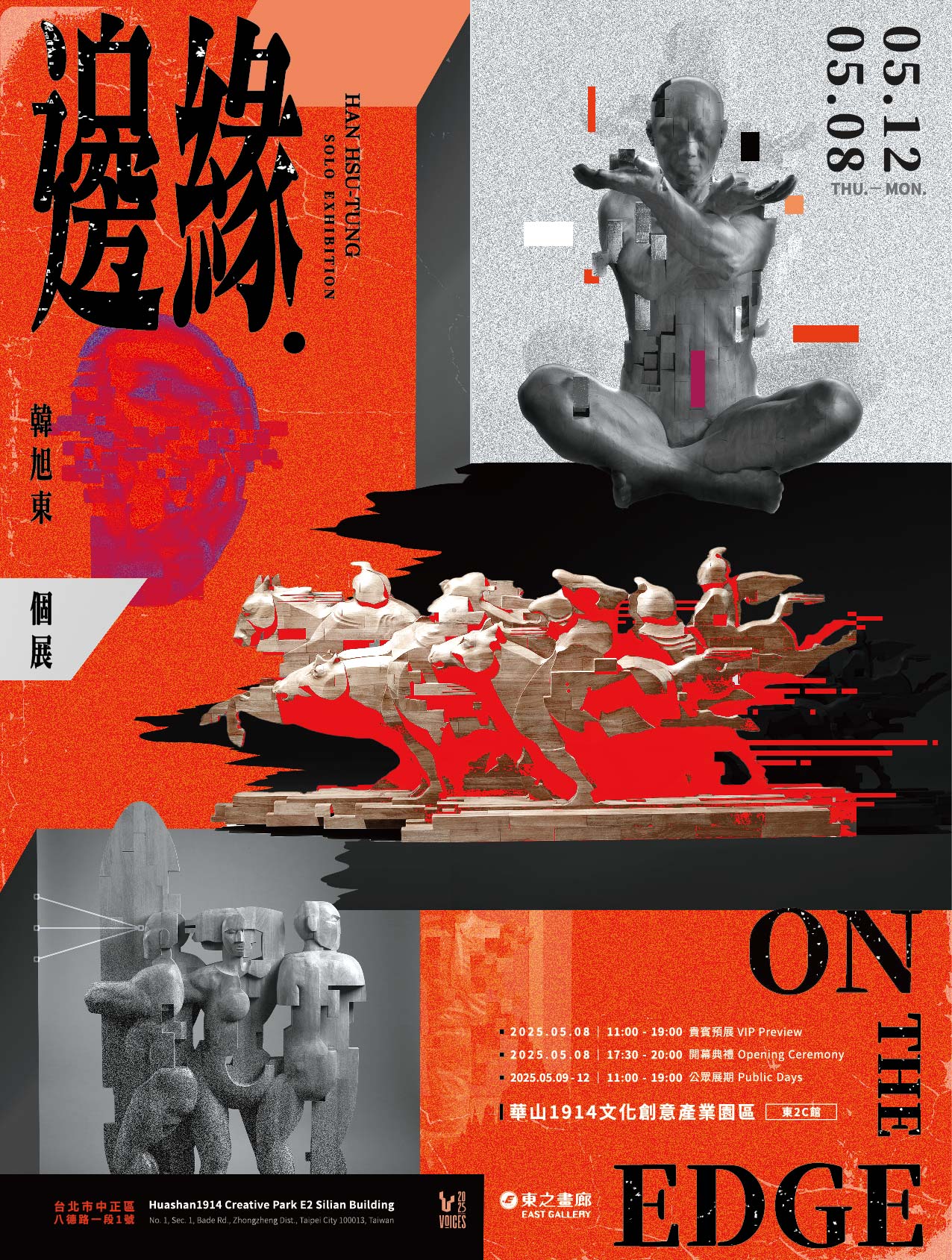Voices 2025 On the Edge: Han Hsu Tung solo Exhibition
Each successive age inevitably gives rise to new forms of artistic expression, and Han Hsu-Tung’s sculpture is no exception. Having spent many years honing his skills with the dedication of an ascetic monk, quite indifferent to fame and fortune, his artworks has finally begun to attract the attention it deserves. Indeed, his dedication and zeal are plainly visible in his distinctive sculpture.
Starting with his sculpture Head 1 in 2012, he began to use small pieces of wood to produce glued laminated timber (glulam). The pieces are joined in both regular and irregular arrangements, interlacing positive and negative spaces, forming a combination of geometric squares reminiscent of the pixels composing a digital image. In this way, the same principles used in generating a flat digital image are used to create a three-dimensional sculpture, and the visual effect is very similar. Following his solo exhibition “Gather and Dismiss” in 2013, this new art style began to be referred to overseas as “pixelated wood sculpture” and classified as a kind of “glitch art.”
Sculpting glulam gives the sculptor a lot of freedom, in that he isn’t constrained by the preexisting shape of a solid piece of wood and it’s possible to create a very large block of wood, subject to the “open time” of the wood glue. What’s more, glulam produces very little waste, and it can even be formed out of previously used timber, making it an environmentally friendly material—especially important in light of the dwindling supply of large pieces of timber suitable for sculpting.
His daughter was studying mechanics in 2019, he noticed a textbook on her desk about the Arduino open-source hardware and software technology. He found that the preface was geared to the needs of novices and artists. Since glulam is formed from long rectangular pieces of wood, it has the flexibility required for moving components. He began to consider how tiny motors driven by a computer might be adapted to integrate moving components into a sculpture, but in a low-key way that doesn’t overshadow the sculpture itself. He went online to find out more, but his progress was very slow. And when the program he tried to write didn’t run, he turned to his daughter for some advice. As a result of his work, he came out with Shaolin, his first moving sculpture, in 2020.
This exhibition highlights the transformation Mr. Han’s work has undergone over the past decade, culminating in the production of a series of moving sculptures. Overcoming the engrained ways of thinking that hamper creative work, after many ups and downs, he eventually succeeded in completing a sculpture which moves in response to the viewer’s hand gestures—a remarkable combination of creativity and ingenuity!


Voices 2025 website: https://www.voicesoat.com/